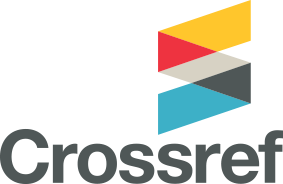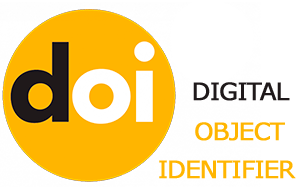LEXICAL AND STYLISTIC MEANS OF COMIC IN THE COLLECTION OF ESSAYS “AS I WAS SAYING … THE WORLD ACCORDING TO CLARKSON” BY JEREMY CLARKSON
DOI:
https://doi.org/10.32689/maup.philol.2024.4.15Keywords:
comic, irony, hyperbole, the effect of deceived expectationAbstract
This article is an attempt to outline the lexical and stylistic means used to express the comic in the collection of essays by a renowned British presenter and journalist Jeremy Clarkson «As I Was Saying... The World According to Clarkson». It has been established that laughter is an important, subconscious, evolutionary reaction to the comic, which is unique to humans and certain primates. Although the researchers have long been interested in the category of comic, this issue has not lost its relevance over time. Most scholars agree that the comic describes phenomena and objects of reality through the lens of mockery or a humorous attitude. The comic effect in Jeremy Clarkson's essays is achieved through the masterly use of irony, hyperbole, simile, gradation, parcellation and metaphor. These stylistic devices reveal the author’s emotional and psychological state, expressing his critical, sometimes contemptuous, attitude towards social norms, politics and existing stereotypes. Irony plays a pivotal role in creating a comic effect. It becomes a powerful tool in the skilled hands of the writer, as its ambiguous nature allows the author to manipulate the content, creating a contrast between what is said and what is actually meant. The study has also shown that the use of logically or semantically incompatible elements, along with the introduction of elements of low predictability, creates the effect of deceived expectation, which confuses the reader and leads to cognitive dissonance or logical disruption. Thus, laughter arises as a reaction to the absurdity of this incompatibility. The research results have revealed that the author employs «complex comic», which requires the reader to possess a certain level of background knowledge (cultural, contextual and social nuances); this prerequisite makes a deeper understanding of the information decoded in the text possible.
References
Агєєва В. О. Комічне як лінгвістична категорія: Класифікація, параметри та переклад. Вчені записки ТНУ імені В. І. Вернадського. Серія: Філологія. Соціальні комунікації. 2020. Том 31 (70). № 2. Ч. 3. С. 56–60.
Блинова І. А., Зернецька А. А. Гумор як різновид комічного: критерії виокремлення, теорії реалізації і засоби вираження. Вчені записки ТНУ імені В. І. Вернадського. Серія: Філологія. Журналістика. 2021. Том 32 (71). № 1. Ч. 2. С.35–43.
Калита О. М. Засоби іронії в малій прозі (кінець ХХ – початок ХХІ століття). – монографія. Київ : Видавництво НПУ імені М. П. Драгоманова, 2013. 238 с.
Калита О. М. Іронія як світоглядний принцип і стилістична категорія. Наукові записки. Серія: Мовознавство. 2004. 1(11). С. 104–107.
Кузьмич О. Я. Мовні засоби творення комічного в українській прозі кінця ХХ століття – початку ХХІ століття: автореф. дис. ... канд. філол. наук: 10.02.01. Луцьк, 2015. 20 с.
Ліщинська О. Сміхова культура та іронія у просторі українського візуального мистецтва. URL: https://journals.indexcopernicus.com/api/file/viewByFileId/1662980 (дата звернення: 09.11.2024).
Мацько Л. І., Сидоренко О. М., Мацько О. М. Стилістика української мови: Підручник / За ред. Л.І. Мацько. Київ : Вища школа, 2003. 462 с.
Мовчан Д. В., Стрельнікова Є. С., Савчук А. І. Вербалізація комічного у сучасному політичному анекдоті. Науковий вісник Міжнародного гуманітарного університету. Серія: Філологія. 2022. № 58. С. 101–104.
Надь Б. Чи дійсно сміх – найкращі ліки? З’ясовуємо природу сміху та як він впливає на організм. Бережи себе. 2024. URL: https://berezhy-sebe.com/yak-smikh-vplyvaie-na-orhanizm/ (дата звернення: 09.11.2024).
Словник-довідник літературознавчих термінів / Упор.: О.В. Бобир, В.Й. Буденний, О.Б. Мамчич, Н.П. Нікітіна; за ред. О.В. Бобиря. Чернігів: ФОП Лозовий В.М., 2016. 132 с.
BBC NEWS Україна. Чому ми сміємося і як це впливає на наше здоров'я. URL: https://www.bbc.com/ukrainian/articles/c9dyn0w96zjo (дата звернення: 10.11.2024).
Cai C. Q., Muellre M. L., Gulun C., Gulun J., Turek A. Sivasathiaseelan H., Guldner S., Scott S. Development of a novel tool to investigate human laughter behaviour and experience. Neuroscience letters. vol. 825. 2024. 137690. doi:10.1016/j.neulet.2024.137690
Clarkson J. As I was saying … The world according to Clarkson. Penguin Books, 2016. 329 p.
Google arts & culture. Richard Burton. URL: https://artsandculture.google.com/entity/richard-burton/m0cg9f?hl=en (дата звернення: 15.11.2024).






